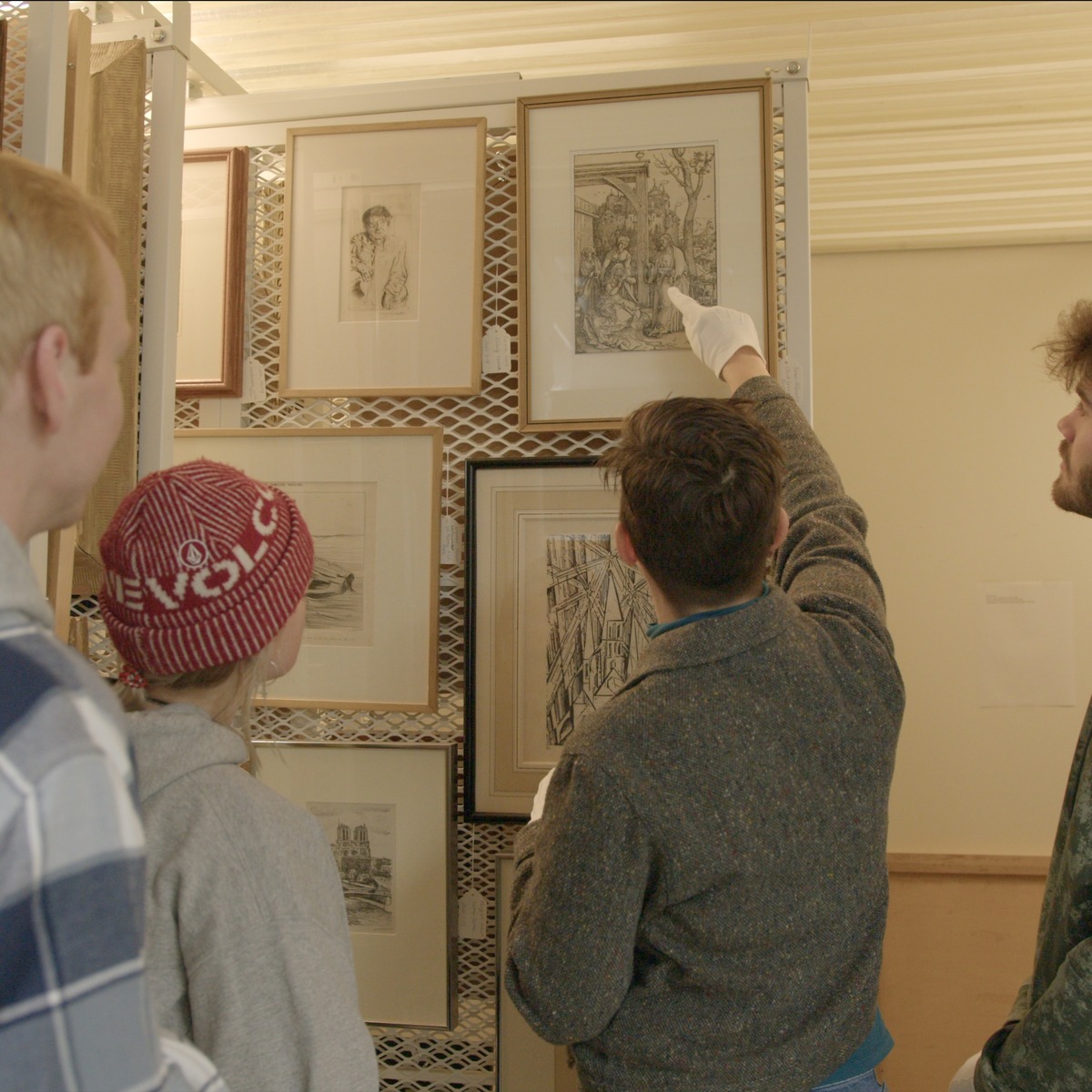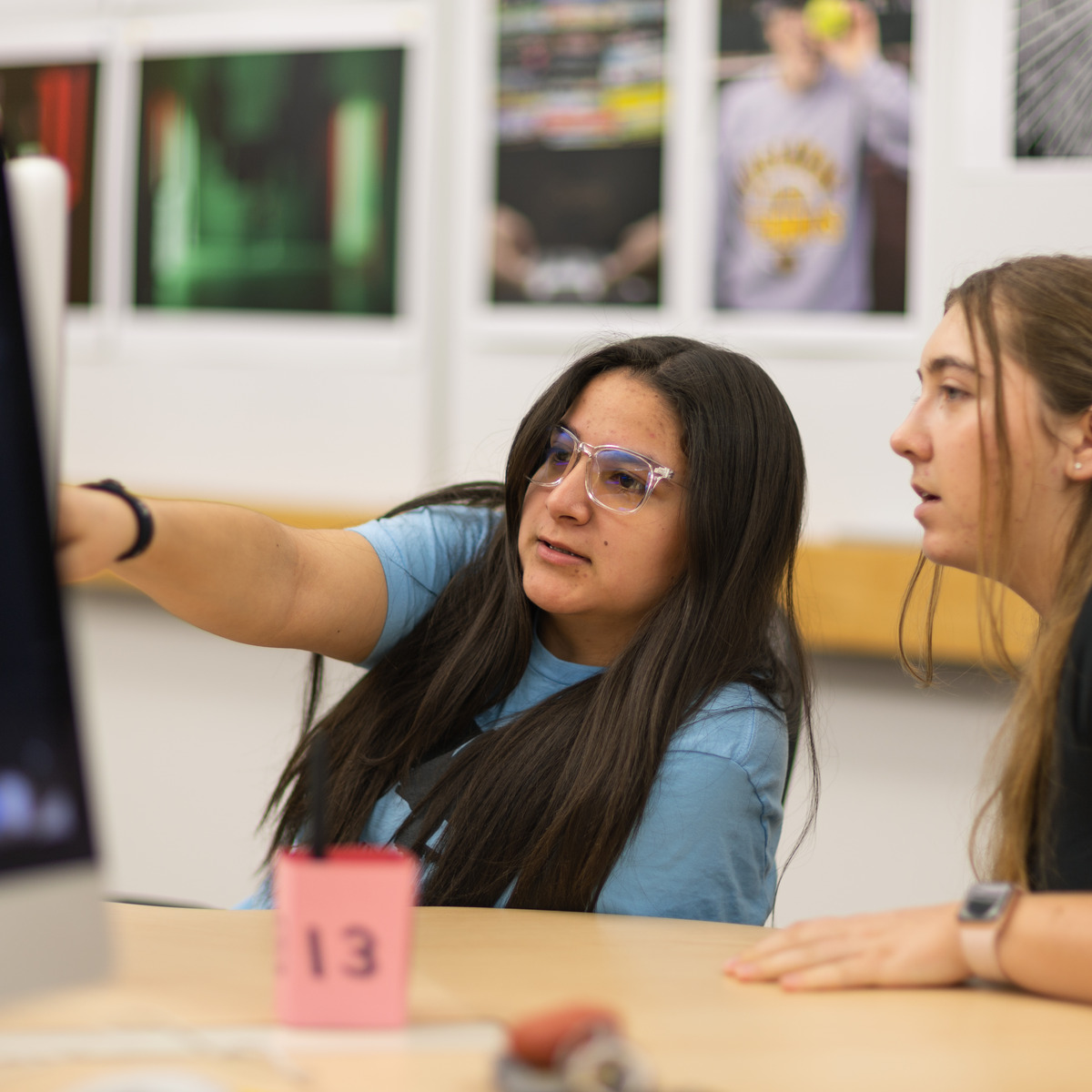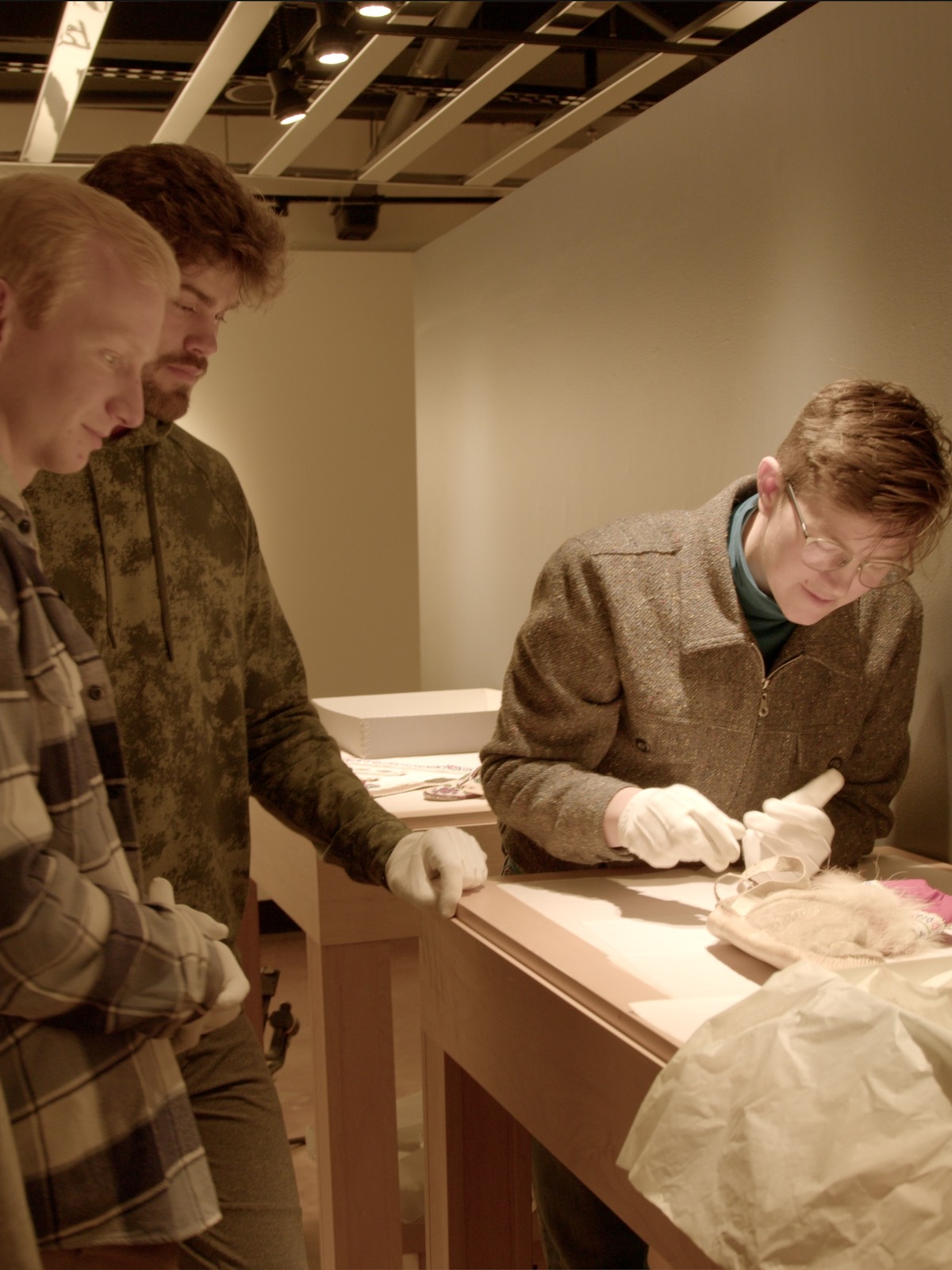Department of Art and Art HistoryAcademics
About the Department
Unleashing Creativity
Art is the intersection of curiosity, research, communication and expression in our world. Being a part of the Art and Art History department at Gustavus will propel your creative spirit, deepen your intellectual potential, and hone your critical thinking skills and aesthetic sensibilities. The department's award-winning faculty believe every person can contribute to the vitality of society and connect with the community through art.
Creative problem-solving is essential for a future everyone wants to live in and the courses in our department build essential skills that apply across all career paths. At Gustavus, you will learn how to apply the iterative creative process, cultivate your skills in research and innovation, employ critical thinking, and be adaptable.

An Ideal Place to Become Connected to the Art World
As an Art and Art History student at Gustavus Adolphus, you will be part of an established community of creators in the State of Minnesota, a national leader in the support of the arts. Located in St. Peter, Minnesota, our campus is a dynamic and supportive place to build close-knit relationships with proximity to big-city art events and exhibitions. You're minutes away from the medium-sized city of Mankato (with ample opportunities for internships) and an hour from the bustling Twin Cities of Minneapolis and St. Paul. You will have opportunities to interact with working artists through gallery talks, professional portfolio reviews, and studio visits.
Discover your path:
Majors, Minors, and Related Programs
The Art and Art History Department offers three highly-customizable majors: Studio Art, Art History, and Art Education. The majors are intertwined, meaning you will learn advanced techniques across mediums while investigating the role art plays in our history, identity and culture.
Students frequently blend their degree with other majors, in areas such as Biology, Environmental Science, Anthropology, English, Psychological Science, Business, and Gender Women and Sexuality Studies to create a truly liberal arts experience and enhance their emerging professional skill sets. Learn how art compliments other majors and the added value of a double major with art.
Related Programs

Experiences That Make You Career-Ready
At Gustavus, all junior and senior studio art majors have their own studio space. The opportunity to spend two years with your own studio, allows you the environment and time to nurture your evolving talents. Our majors benefit from an annual Review Day during which professional artists and curators review student portfolios and offer constructive feedback in preparation for students' spring on-campus exhibitions. The Center for Career Development's dedicated staff and the department faculty stand ready to assist you in securing internships and job prospects in arts and art-related fields. You will graduate ready to carry your creative passion into your career journey.
Opportunities in Art and Art History
Design Your Possibilities
At Gustavus, you can explore and express your artistic interests. The faculty is committed to holistic student success and mentoring. There are opportunities to showcase your work on-campus, dozens of art events throughout the year, a network of internship opportunities on-campus and in major cities nationwide, and encouragement to study away in one of the art capitals of the world.
Explore opportunities to extend your learning
- Exhibitions — There are opportunities to display and view art on campus in the Hillstrom Museum of Art, the Schaefer Art Gallery, the Career Center, the Folke Bernadotte Library, and on our campus grounds as well as within the majority of our academic buildings.
- Student Art — Art is for everyone at Gustavus. All students are welcome to be a part of our community. Our student artists range from those committed to pursuing full time careers as artists, to students who craft in their free time, to those who are intentionally building a creative skillset that will enhance their professional CV.
- Study Away — Students are highly encouraged to study away during their time at Gustavus. Experience a new global perspective art in places such as Copenhagen, London and Florence.
- Scholarship Support — Gustavus offers an art scholarship to help you further your artistics growth and education, to encourage your creativity, and provide financial assistance to help you pursue your passion for art and art history.
- Careers — The faculty and the Center for Career Development staff will provide guidance and resources to help you chart your career path. Our alumni thrive. Gusties are creatives working directly and indirectly with the arts. They are running their own design studios, practicing architects, nationally recognized artists, museum curators, educators, graphic designers, dentists, and leaders in organizational development.
- Facilities for Learning — The campus offers various facilities and resources to support learning in the visual arts including the Hillstrom Museum of Art, Schaefer Art Gallery, Schaefer Fine Arts Building, Schaefer Fine Arts Junior and Senior Studios, and Beck Hall Digital Arts Lab.

Gusties
will
Shine
Meet the students and faculty in Art and Art History! They are a globally-minded, justice seeking, and service-oriented community of creators.

Olivia Norquist ’24
Major Art History
“My internships within the Department have given me a lot of real-world experience that has prepared me for what to expect outside of college.” Olivia Norquist is an Art History Major from Cedarburg, Wisconsin. Her decision to attend Gustavus stemmed from the warm welcome she received on her campus tour, along with the endless opportunities […]
Keep in Touch with the Art and Art History Department
The Art and Art History Program prepares you to do transformational work in your career. You can spend time in an art studio, engage in research in the Hillstrom Museum, and cross pollinate with another major. Our students are involved across the campus from music and theatre, to athletics, community service, and student leadership. We invite you to join in the creative work to help build stronger and more welcoming local and global communities.
Contact Art and Art History
Email: art-dept@gustavus.eduPhone: 507-933-7019
Schaefer Fine Arts Art, 20
800 West College Avenue
Saint Peter, MN 56082
